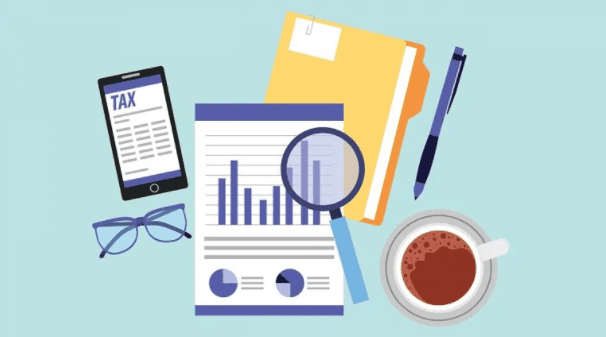A taxpayer will choose to file his income tax return for a full year reporting, suspension, refund for income tax etc. A return on income tax is a method in which taxpayers may report their wages, expenditures, tax deductions, savings, taxes etc. The 1961 Revenue Tax Act allows a taxpayer to file an IT Return Filing, in compliance with different circumstances.
The Department of Income Taxation includes the income tax return filing system (ITR Filing Online). It is important that a taxpayer have the required documentation ready before addressing the steps involved in e-filing the income tax return.
1. Revenue and tax calculation?
In compliance with the rules on income tax law applicable to them, the taxpayer shall measure his income.
2. Tax Certificates and Form 26AS deducted from source(TDS)
In the 4-quarter span of the financial year the taxpayer may make a list of the TDS value of the certificates earned from him. Shape 26AS allows the participant to sum up the same.
3. Select the correct tax form for income
For filing the return, the taxpayer has to review the income tax form / ITR form. The taxpayer will proceed with filing the tax return after the income tax form has been developed.
For online and offline registration there are 2 modes available. The online mode can only be given for ITR 1 and ITR 4; forms of the other individual categories of taxpayers are not available. For all types of income tax forms, the offline mode (XML generation and uploading) is available.
4. Download the income tax platform ITR utility
Click on the ‘IT Return Preparation Program’ option in the right-hand menu at www.incometaxindiaefiling.gov.in. Select the measurement year and download the program offline facilities, e.g. Depending on your needs, Microsoft Excel or Java utilities.
5. Full your downloaded file information
When the offline service is downloaded, fill in the required revenue information and review the tax payable, or the reimbursed sum as calculated by the utility estimate. You can fill in the downloaded form with information on income tax.
6. Validate the entered data
On the right side of the downloaded form you can see a few buttons. To make sure all the correct information is filled, click on the “Validate” button.
7. Transform the file into XML
When you have validated successfully, click “Generate XML” to convert the XML file into an XML format on the right side of the file.
8. Upload the XML on the revenue tax portal
Log in to the E-Filing portal of income tax and pick the ‘Return to Revenue tax’ option from the E-File page.
Provide information like PAN, evaluation year, number of ITR shape, and mode of operation. Remember to select the ‘Upload XML’ option from the drop down that matches the “Proposal Mode,” as seen in the below picture.
Now connect your computer’s XML file and press ‘Pass.’ Pick one of the authentication modes available ? Aadhaar OTP, EVC, or manually signed copy of ITR-V to CPC.
What is the Tax on Revenue?
Indian taxes include two types: direct taxes and indirect taxes.
Direct tax is a levy which is directly assessed and charged on the wages, e.g. wage tax etc. Tax on income is a direct tax.
Indirect tax is a tax that is chargeable indirectly to you when you buy products or use services , for example. Purchase a cell telephone or eat a fast food. You bill the tax by selling the cell phone or the fast food service provider, then deposit it on the government account. The bulk of indirect taxes are now provided by the GST.
Anyone making income above a certain sum is charged. Your earnings may be from wages, investment interest income, shared funds income, selling or trading or working income. The rate of income tax and IT Return Filing is pre-decided in the Union Budget (in the House of India) at the beginning of the year. Income tax is called tax charged or withheld on these wages.

As the editor of the blog, She curate insightful content that sparks curiosity and fosters learning. With a passion for storytelling and a keen eye for detail, she strive to bring diverse perspectives and engaging narratives to readers, ensuring every piece informs, inspires, and enriches.










